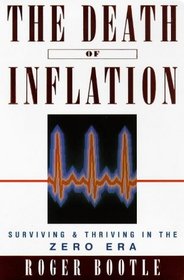Search -
Death of Inflation: Surviving and Thriving in the Zero Era
Death of Inflation Surviving and Thriving in the Zero Era
Author:
The Western world is in the grip of overwhelming forces which are transforming the economic and business landscape and the lives of ordinary people. We are witnessing the death of perpetual inflation and the beginning of the "zero era". Imagine a world without inflation: prices in the shops rising in some years, but falling in others; pay rising... more »
Author:
The Western world is in the grip of overwhelming forces which are transforming the economic and business landscape and the lives of ordinary people. We are witnessing the death of perpetual inflation and the beginning of the "zero era". Imagine a world without inflation: prices in the shops rising in some years, but falling in others; pay rising... more »
ISBN-13: 9781857881486
ISBN-10: 1857881486
Pages: 272
Edition: Updated
Rating: 1
ISBN-10: 1857881486
Pages: 272
Edition: Updated
Rating: 1
3.5 stars, based on 1 rating
Publisher: Nicholas Brealey Publishing
Book Type: Paperback
Other Versions: Hardcover
Reviews: Amazon | Write a Review
Book Type: Paperback
Other Versions: Hardcover
Reviews: Amazon | Write a Review
Genres:
- Business & Money >> Economics >> Inflation
- Business & Money >> General
- Business & Money >> Popular Economics
- Politics & Social Sciences >> Government >> Elections
- Engineering & Transportation >> Accounting & Finance >> International >> Finance >> Inflation





